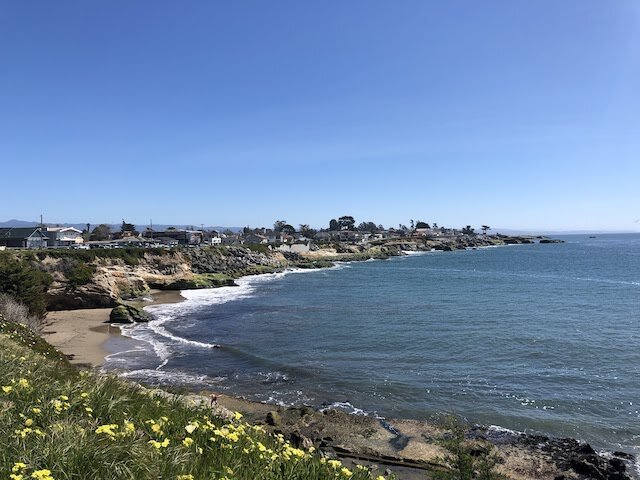The Ultimate New Zealand Hiking List in 2025
Welcome to New Zealand, the land of the long white cloud. Lakes and rivers in shades of blue that you didn’t know were even found on planet earth. Scenic roads with thousands of sheep dotting the hillside. Volcanoes and glaciers peaking out around the next bend. Fields of vastness with the sky filling out for miles in every direction. Friendly people, who care about the beauty of their country, want to teach you about it, want you to enjoy it, and want you to help them conserve it.
One of the best ways to experience this incredible country is by hiking the land. Here are the top 5 hikes to check out. And if you need any recommendations for gear for these hikes, be sure to check out my gear page.
1. Tongariro Alpine Crossing (Tongariro National Park)
This hike alone might be a reason to travel to the North Island. Otherwise known as hiking to Mt. Doom, Tongariro Alpine Crossing is a full day, 19.4 km hike one way. Most people leave their car at one end and take a shuttle to the other end. We did this with Mountain Shuttle, which you definitely want to book way in advance.
The hike itself is fantastic because it is so varied. You walk over marshy lavabeds, along streams, up the side of a volcano, across flat moonscapes, alongside smoking mountainsides, near sulphuric lakes, and down through a lush forest. It has everything, and though it is a long day of hiking, with equal amounts of uphill, downhill, flat, and scrambling, folks of all ages and fitness levels do it.
Pro tip: Wear lots of sunscreen and bring many layers as the trail is very exposed.
This hike is also one of the 9 official “great walks” of New Zealand.




2. Routeburn Track (Fjordland and Mt. Aspiring National Parks)
This hike was our main attraction on the South Island, and we planned much of our trip around it. We originally had wanted to hike the Milford Track as it would have given us greater access to Fjordland National Park (which is pretty much unaccessible beyond hiking or heli-touring). However, you have to book that over a year in advance. Instead, we booked the nearby and beautiful Routeburn Track, which did not disappoint. We did have to book it about six months out. The hike is 32 km one way with four different sleeping huts/camping areas along the route. Depending on when you book and how you book, you can break up the trip in two days, three days, or more! We did a pretty traditional route and booked two nights: one at Routeburn Flats Hut (6.5 km into the hike) and one at Lake Mackenzie Hut (13.6km from the first hut). Permits need to be picked up in advance in Queenstown, so plan accordingly. We also paid for a car relocation service so that we didn’t have to hike back the way we came or drive the 4.5 hours (324 km) back to the other side of the mountain. It was pricey but totally worthwhile (note: you have to pick up a car key lockbox in Queenstown, Te Anau or Glenorchy). Alternatively, there is a bus you can take to Te Anau or Queenstown or you can pay for a shuttle service.
If you camp in the huts, you don’t need to bring cooking gas or a stove, tent, or sleeping pad, as a mattress and gas stoves are provided (in the summer only). Also of surprise was the fact that toilet paper and soap were available at the facilities in the campsites (so civilized!). What is a little less civilized is the way you must lie shoulder to shoulder with strangers on the bunks. It’s like adult sleep-away camp! If you don’t like to share space with others, consider bringing the extra weight of a tent and camp out (in designated reserved spots only – no cowboy camping!). Water can be treated but doesn’t have to be – you can drink the rainwater out of the tap in the huts or fill up from waterfalls along the route.
The hike itself was well maintained and quite manageable, with 2700 ft of elevation gain, the highest point at 4,300 ft at Harris Saddle. The hike involved short bursts of intense ascending and descending coupled with mostly flat terrain. You are exposed to many different kinds of land – lush forest, lava fields, waterfalls, green hillsides, valleys, views of the Southern Alps, lakes, and of course, the Routeburn (river) itself!
Pro Tip: Book everything in advance, make friends on the trail, bring camping food from the U.S. (much cheaper and tastier), carry trash bags (you must carry all food in and out!), and don’t forget an eye mask and good ear plugs if you are sleeping in the huts!









3. Mueller Hut Track (Aoraki/Mt. Cook National Park)
Rising dramatically above the landscape, reflected in the electric blue waters of Lake Pukaki, Mt. Cook is not to be missed. As the tallest mountain in New Zealand, it is snow covered year round and often masked by clouds. The weather is unpredictable as well. Like any popular New Zealand hike, book your stay at the Mueller hut far in advance, especially since this is pretty much the only easily accessible hut. It is a 5.2 km straight climb up to the hut, which sits below Mt. Ollivier’s peak. This hut, unlike the ones on the Routeburn, only had pit toilets (no toilet paper) and no running water (however, there is a precious water tank collecting rainwater which can be used for cooking and cleaning). Make sure to pick up your permits at the visitor center beforehand. While there, you can visit the Sir Edmund Hillary Alpine Center, a museum in honor of the Kiwi, explorer, and famed first summit-er of Everest. Sir Edmund Hillary actually dedicated the current Mueller hut in 2003 (rebuilt over the years due to avalanche).
The trail to Mueller hut is less a trail and more endless switchbacks followed by endless rock scramble. Though a pretty rigorous workout (nearly 3500 ft of elevation gain in 3.25 miles!), there are views the whole time of Mt. Cook and the valley and lakes below. Once you make it to the top of the hike and you turn towards the hut, you get excellent views of multiple glaciers.
Pro tip: It can get incredibly windy and cold on the hike. It actually snowed when we were there, even though it was summer! Carry many layers and hike with poles to stable yourself against the wind gusts.




4. Rob Roy Glacier (Mt. Aspiring National Park)
We actually didn’t initially set out to do this hike, but were looking for something fun to do in Wanaka. The main hike most people do is the Roy’s Peak hike, but we opted away from it because a) it is known to be quite crowded and b) very exposed. If we had another day and could do it at sunrise we may have considered it. Instead, we headed up a road which ended at Mt. Aspiring National Park, to hike to the foot of the Rob Roy Glacier. What we didn’t know is that 30 km from the start of the hike, the paved road ends and a rocky, gravel road with water ford crossings begins! But the adventure is in the journey, not the destination, right?
The hike itself is about 10 km roundtrip, with a bridge walk over a raging river, views of the valley and mountains of Mt. Aspiring National Park, waterfalls, and at the end, Rob Roy’s glacier directly across from you on the other side of the river. We saw a lot of people hiking this with young children, as it is quite manageable with amazing views!
Pro Tip: Be careful what kind of car you take on this drive. 4×4 or AWD vehicles are recommended, though it would not be impossible in a sedan (we saw people do it!).


5. Cathedral Cove (Te Whanganui-A-Hei Marine Reserve)
This is more of a walk, seeing as it is paved and only 2.5km each way. However, you can make it into more of an adventure if you walk from the town of Hahei or another starting point. Of note, there is no parking near the start of the trail in the summer, you must park in the town and pay for a shuttle. Otherwise, you can walk up the hill through the neighborhood to the start of the hike, or sometimes the locals who live on the main street open up their yards to parking for a small fee.
The hike itself grants gorgeous views of the Coromandel Coast, a favored beach town area of the North Island. The coast has great rock formations and shimmering blue ocean as far as the eye can see. The hike takes you down to the white sand beach where there are more rock formations and you can swim in the waves. There are a few turn offs from the main trail that offer other drop downs into the water.
Pro Tip: Wear your swimsuit on the hike to enjoy the refreshing water at the end!



As you can see, there is a vast variety of amazing and unique hikes throughout New Zealand – you could spend your whole time hiking (and we practically did!). As a country with a third of all land designated and protected as national park, it is an adventurer’s paradise.
A map of the above mentioned trailheads can be found here.







Definitely sounds and looks like an amazing time! Its definitely going on my list of places to visit.
So glad you had an awesome time!!!!! I bet your legs are super buff too 🙂
Haha… if only! But yes, hiking is such a great way to see a new place – highly recommend!!